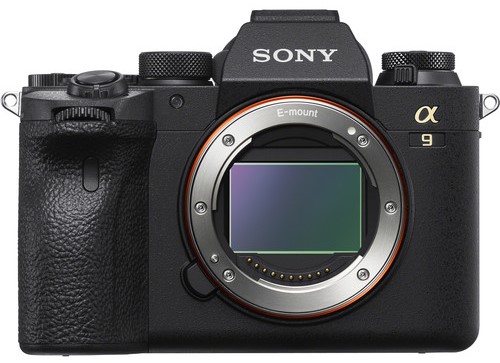Buying a pro‑grade sports camera used to mean lugging around a bulky DSLR with a loud shutter and a flash of mirror blackout every time you clicked the shutter. Sony’s Alpha 9 line changed that narrative with the original a9 in 2017 – it delivered 20‑frames‑per‑second silent shooting with no viewfinder blackout and a stacked 24‑MP sensor that kept up with pro DSLRs for autofocus and image quality.
Two years later, Sony released the Sony a9 II, a camera that looks almost identical on paper but improves the original in lots of small yet meaningful ways: it doubles the mechanical‑shutter frame rate, refines the grip and controls, adds gigabit Ethernet and better wireless connectivity, and even lets you attach voice memos to your photos for faster newsroom workflows.
If you’re trying to decide whether the Sony a9 II belongs in your kit in 2025, this guide dives deep into what’s new, what’s familiar, and whether this workhorse still makes sense compared to Sony’s newer a9 III or high‑resolution a1 bodies.
Table of Contents
Which a9 Are We Talking About?
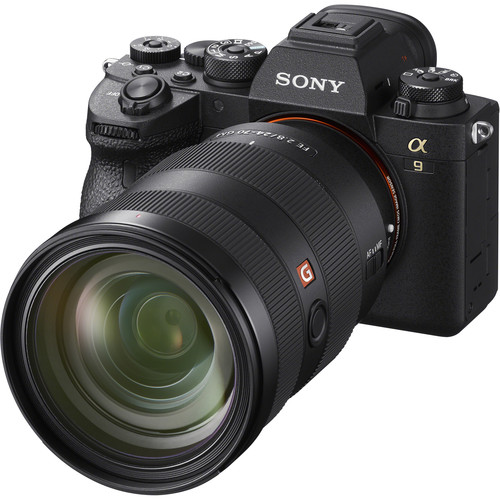
The “a9” family now spans three generations. The original a9 from 2017 introduced the stacked full‑frame sensor and 20 fps electronic shutter that changed sports shooting forever.
The Sony a9 II, released in late 2019, builds on that platform with refined ergonomics, a more robust shutter mechanism and improved connectivity. The a9 III, announced in late 2023, goes further by adopting a global‑shutter sensor and shooting at up to 120 fps with flash sync at any speed – a different beast covered in another guide.
This article focuses exclusively on the Sony a9 II and what it offers photographers in 2025.
Headline Features and Why They Matter
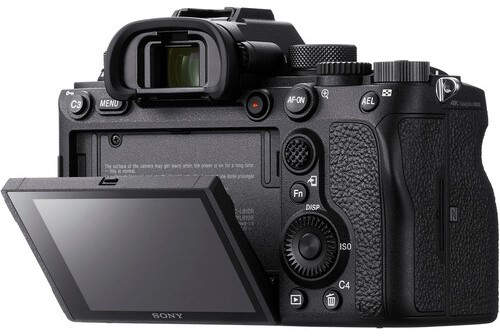
Below are the key specifications that define the Sony a9 II and differentiate it from both the original a9 and Sony’s other Alpha bodies.
24.2‑MP Stacked Full‑Frame Sensor
Sony retained the 24.2‑megapixel stacked CMOS sensor from the original a9. This sensor design places RAM and processing right on the chip to enable ultra‑fast readout and minimal rolling shutter. Coupled with the updated BIONZ X processor and front‑end LSI, the Sony a9 II can process 60 autofocus and exposure calculations per second and maintain continuous autofocus at up to 20 fps. In practice, this means you can follow fast action without the “jello” effect that plagued earlier mirrorless cameras.
Blazing Frame Rates
The Sony a9 II offers two different continuous shooting speeds:
- 20 fps with the electronic shutter for up to 361 JPEGs or 239 compressed RAW files. There is no viewfinder blackout during these bursts; the electronic viewfinder (EVF) shows a continuous live image so you can track subjects effortlessly.
- 10 fps with the mechanical shutter – double the original a9’s 5 fps mechanical limit – which is useful when you need to light your subject with a flash or avoid potential banding from artificial lighting.
The camera will continue making autofocus and exposure calculations at 60 Hz regardless of shutter type, and Sony’s algorithm improvements help it stick to erratically moving subjects.
Hybrid Autofocus with Advanced Subject Recognition
The Sony a9 II inherits the original’s 693 phase‑detection points covering about 93 % of the frame and 425 contrast‑detection points. Real‑time tracking now includes eye detection for people and animals, Real‑time Eye AF for movies, and a new algorithm that improves eye tracking for animal subjects. You can also choose whether the camera prioritizes the subject’s left or right eye. The AF system can continue tracking even when shooting slower apertures (smaller than f/16), which helps if you deliberately slow your shutter speed for motion blur.
Anti‑Flicker and Electronic Shutter Advantages
A new anti‑flicker mode detects fluorescent and LED lighting and times the mechanical shutter release to minimize exposure and color fluctuations. With the electronic shutter, you still enjoy silent shooting, no mechanical vibration and shutter speeds up to 1/32,000 s. In fact, the Sony a9 II can fill its buffer with 130 uncompressed RAWs at 20 fps and that using a fast SDXC card, the buffer clears in about 26 seconds. For compressed RAW or JPEGs, the quoted numbers are higher: 239 compressed RAW or 361 JPEGs.
However, there are caveats. Achieving 20 fps requires using the electronic shutter and selecting JPEG or compressed RAW; uncompressed RAW slows the camera down and reduces the buffer capacity. Also, the electronic shutter may exhibit minimal rolling‑shutter distortion when panning, though the effect is much reduced compared to other cameras.
Video Capabilities
The Sony a9 II isn’t a cinema powerhouse but still offers solid video specs: it records 4K video (3840×2160) at 24 or 25 p with full pixel readout or 30 p with a slight 1.24× crop. Full HD (1080p) can be recorded at up to 120 p for slow‑motion footage. It uses the XAVC S codec with 4:2:0 8‑bit internal recording and offers micro‑HDMI output for external recorders. There are 3.5 mm microphone and headphone jacks, plus a digital audio interface in the multi‑interface hot‑shoe that works with Sony’s ECM‑B1M shotgun microphone or XLR‑K3M adapter. Get more details about the a9 II in the video above by digiDirect.
5.5‑Stop In‑Body Stabilization and Improved Shutter
Sony’s 5‑axis image stabilization system has been refined to deliver 5.5 EV of compensation, aiding both stills and video shooting. The mechanical shutter has been redesigned for durability (tested for over 500,000 cycles) and to reduce vibrations that could cause image blur.
Robust Build, Weather Sealing and Ergonomics
One of the biggest complaints about early Sony mirrorless bodies was their small, slippery grip. The Sony a9 II adopts the larger grip and button design introduced on the a7R IV. Notable changes include:
- Deeper grip and repositioned front dial for more secure handling.
- Raised and enlarged AF‑ON button, improved joystick and more prominent custom buttons.
- A locking exposure compensation dial and improved tactile feedback on other dials.
- Enhanced dust and moisture sealing across all seams, the battery door and media compartment.
Sony’s design still lacks a top LCD, but the 3.68‑million‑dot OLED EVF offers 0.78× magnification and a 120 fps refresh rate with no blackout. The rear LCD tilts up and down and supports touch for AF point selection, though the menu system remains dense and largely navigated by buttons.
Dual UHS‑II Card Slots and Modern Connections
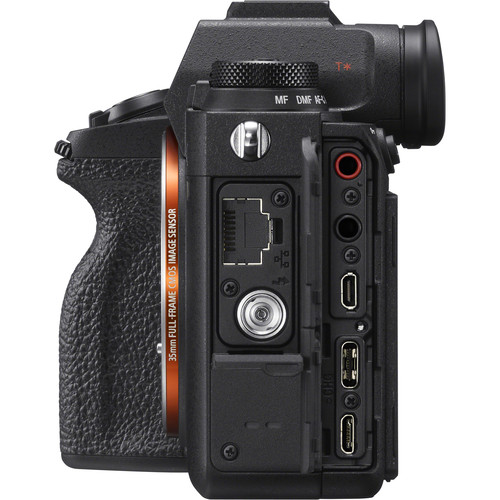
Two SD card slots now both support UHS‑II, giving you options for redundancy or overflow and delivering faster write speeds. Connectivity upgrades are substantial:
- 1000BASE‑T Ethernet port for wired gigabit transfers.
- Wi‑Fi 5 GHz and 2.4 GHz support and Bluetooth for tethering or transferring images to mobile devices.
- FTPS (SSL/TLS) support for secure file transfer and improved PC remote performance.
- USB‑C 3.2 Gen 1 port for fast data transfer and charging.
- Micro‑HDMI, PC sync port, headphone and mic jacks, plus a LAN terminal on the side.
Voice Memo and Workflow Enhancements
One headline feature for working photojournalists is the voice memo function: you can record spoken notes that are attached to each photo. With Sony’s Transfer & Tagging mobile app, these voice memos can be automatically converted to text (IPTC metadata) and sent alongside your images via FTP. This streamlines captioning and delivery from the field, saving time during fast‑paced events.
How Does It Perform in the Real World?
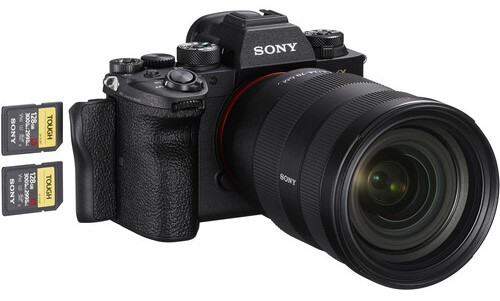
Autofocus Speed and Reliability
The Sony a9 II’s autofocus system is among the best for sports and wildlife. The 693‑point phase‑detection system covers most of the frame and locks on quickly even in low light. The focus points cover approximately 93% of the sensor, making it easier to keep a subject within an AF area. Eye detection and subject tracking are extremely reliable; Real‑time Eye AF works on both humans and animals and now extends to videos.
While AF‑C tracking is snappy, the camera sometimes hesitates in AF‑S (single) mode because it refocuses the lens even if the subject is already sharp. This behavior can be avoided by using AF‑C for continuous shooting. Anti‑flicker shooting also helps when working under fluorescent lights, though it only works with the mechanical shutter.
Buffer and Data Flow
The combination of stacked sensor and dual UHS‑II slots yields fast performance, but there are practical limits. As noted earlier, the buffer holds roughly 130 uncompressed RAWs or 170 uncompressed RAWs at 10 fps before the camera slows down. Using compressed RAW or JPEG dramatically increases that number (up to 239 compressed RAW / 361 JPEG). However, clearing the buffer still takes about 26 seconds with a 300 MB/s SDXC card. During that time, you can review already written images but cannot access those still in the buffer or certain menu options. Planning memory card formatting ahead of time is also recommended because formatting a 32 GB UHS‑II card can take about nine seconds.
Image Quality: Dynamic Range, Color and Noise

With a 24.2‑MP full‑frame sensor, the Sony a9 II strikes a balance between resolution and low‑light performance. The sensor retains the broad dynamic range and pleasing color reproduction of the original a9, producing JPEGs with good contrast and RAW files that allow plenty of latitude for post‑processing. The noise control remains strong up through high ISO settings, and the camera’s JPEG engine is excellent. The updated image‑processing algorithm reduces noise in medium‑to‑high sensitivity ranges while maintaining subjective resolution.
However, because of the stacked design, the Sony a9 II’s base ISO starts at ISO 100 and doesn’t quite match the extreme dynamic range of low‑base‑ISO sensors like the a1 or a7R IV when shooting still landscapes. It also doesn’t offer the global‑shutter benefits of the a9 III, so occasional rolling‑shutter artifacts can appear when panning quickly, though greatly reduced compared to earlier models.
Video Quality and Limitations
Although Sony markets the Sony a9 II primarily as a stills camera, its 4K video is crisp and oversampled, producing detail‑rich footage at 24/25 p. When recording at 30 p, the camera crops slightly (1.24×), but there is no pixel binning or line skipping. 1080p at 120 fps offers great slow‑motion options. You can output clean 4K to an external recorder via HDMI while simultaneously recording internally. However, there is no 10‑bit internal recording or advanced log profiles, and 4K/60p is absent. For those needs, Sony’s a7S III or a1 are better choices.
Handling and Ergonomics in Practice
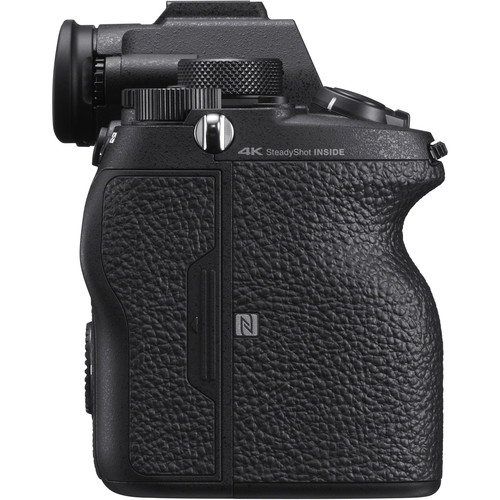
Most photographers cite the improved grip and control layout as a major reason to choose the Sony a9 II over its predecessor. Buttons are larger and easier to find, the AF‑ON button has more travel and feedback, and the joystick is more textured and precise. The exposure compensation dial now has a lock button that can remain locked or unlocked depending on your preference. The front and rear command dials are positioned so they can be reached without shifting your grip.
The camera weighs about 738 g (26 oz) with battery and card and maintains the compact dimensions of Sony’s mirrorless line. When combined with large lenses like a 400 mm f/2.8, some users still complain about the right-hand fingers pressing against the lens barrel; this issue was partially fixed in later bodies but is still present on the Sony a9 II. Overall, though, the camera feels more secure in hand than the original a9. The weather‑sealed magnesium alloy body gives confidence when shooting outdoors, and the absence of a top LCD is hardly missed thanks to the customizable EVF and rear screen.
Connectivity and Workflow in Action
For sports and news shooters, the Sony a9 II’s wired and wireless upgrades are perhaps the biggest improvement. The built‑in gigabit Ethernet port allows rapid image transfer to servers, with optional FTPS encryption for security. Dual‑band Wi‑Fi and Bluetooth support remote control via Sony’s Imaging Edge software and can push images to mobile devices quickly. The voice memo function is extremely handy: press a button, record a brief caption, and the recorded audio can be automatically converted to text and embedded into IPTC metadata using Sony’s Transfer & Tagging apps. This feature alone can save time when covering sports matches or press events, where editors expect captions with players’ names and outcomes.
Dual UHS‑II card slots provide flexible storage options (simultaneous recording for redundancy, separate JPEG/RAW channels or overflow), and the USB‑C port allows tethering or in‑camera charging. The LAN port, USB‑C, micro‑HDMI, PC sync and 3.5 mm audio jacks are all grouped along the left side behind weather‑sealed doors.
Battery Life and Power Considerations
The Sony a9 II uses Sony’s NP‑FZ100 battery, one of the larger mirrorless batteries on the market. Real‑world tests show that it easily lasts through a day of heavy shooting. The camera can handle a full sporting event or wedding without swapping batteries. For longer assignments, the VG‑C4EM vertical grip doubles battery life and improves ergonomics, though it increases weight and cost. Charging via USB‑C is convenient for travel.
Price and Value in 2025
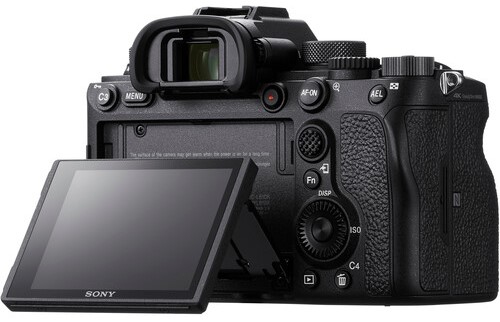
At launch in late 2019, the Sony a9 II body cost around $4,499 – squarely in professional flagship territory. Today, Sony’s a9 III and a1 occupy higher price tiers, while the Sony a9 II has become more affordable on the used market.
The camera is often found at significant discounts and that buying used from reputable dealers like MPB includes warranties and return windows. In comparison, the a9 III lists around $6,400, while the high‑resolution a1 runs about $6,500. For photographers who don’t need global‑shutter features or 50‑MP files, the Sony a9 II remains a cost‑effective way to get flagship performance.
Pros and Cons
Pros
- 20 fps blackout‑free electronic shutter and 10 fps mechanical shutter, delivering high‑speed capture for sports and wildlife.
- Stacked 24.2‑MP sensor with excellent image quality and low noise; dynamic range and color remain competitive.
- Advanced hybrid autofocus with 693 phase‑detection points, covering 93 % of the frame, Real‑time Eye AF for humans and animals, and robust tracking modes.
- Improved ergonomics: deeper grip, enlarged AF‑ON button, refined joystick, locking exposure compensation dial and robust weather sealing.
- Voice memo function with voice‑to‑text conversion for IPTC metadata, plus built‑in Ethernet and dual‑band Wi‑Fi for rapid image delivery.
- Dual UHS‑II slots, USB‑C 3.2 Gen 1, micro‑HDMI and digital audio interface for flexible storage and connectivity.
- 5.5‑stop in‑body stabilization and redesigned mechanical shutter rated for 500k cycles.
- High‑resolution 3.68‑Mdot EVF with 120 fps refresh and no blackout.
Cons
- No global shutter – fast panning can still show slight rolling‑shutter distortion compared to the a9 III.
- Base ISO 100 and 24 MP resolution may not satisfy those needing maximum dynamic range or huge cropping flexibility; the a1 offers 50 MP and a9 III offers global shutter.
- Buffer clearing takes ~26 seconds when full, and 20 fps requires compressed RAW or JPEG.
- Video features are limited: no 4K/60p or 10‑bit internal recording; for video‑centric users, consider the a7S III or a1.
- Menu system remains complicated, and the touchscreen is only used for selecting AF points.
- Grip still a bit tight with large lenses, and there is no top LCD for quick settings review.
Who Should Buy the Sony a9 II?
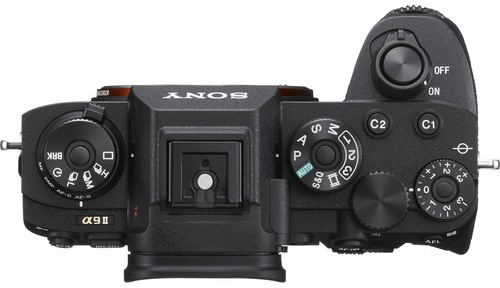
Ideal Users
- Professional sports and wildlife photographers who need high‑speed continuous shooting with reliable autofocus and want a more affordable alternative to the a9 III. The 20 fps silent shooting and 93 % AF coverage make it easy to catch peak action and track erratic subjects.
- News photographers and photojournalists whose workflow depends on speedy image delivery and accurate captions. The built‑in Ethernet and Wi‑Fi, plus voice memo‑to‑IPTC conversion, streamline transmission from the field.
- Event and wedding shooters who appreciate silent shooting, minimal viewfinder blackout and strong low‑light performance. The Sony a9 II’s eye AF, 5.5‑stop stabilization and dependable battery life help in dynamic, unpredictable environments.
Consider Alternatives If…
- You need global‑shutter performance to completely eliminate rolling‑shutter distortion and want to sync flash at any shutter speed. The a9 III offers these features at a higher price.
- You prioritize resolution and dynamic range for landscapes or commercial work. Sony’s a1 (50 MP) or a7R IV/V (61 MP) provide higher resolution and better base‑ISO dynamic range.
- You are video‑focused and require 4K/60p, 10‑bit recording or advanced log profiles. The a7S III or FX3 might serve you better.
Tips for Buying and Shooting
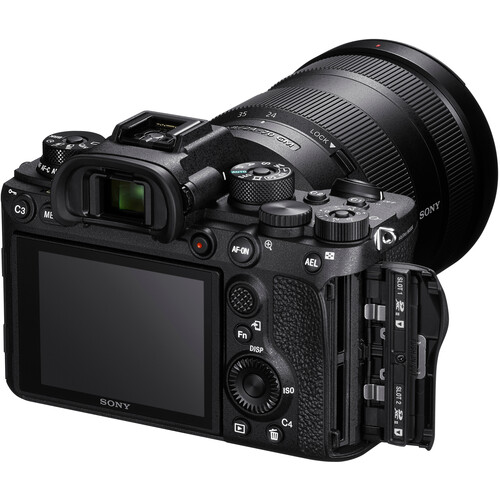
Choose fast, large UHS‑II cards. To make the most of the 20‑fps bursts, invest in high‑speed cards and consider the extra buffer time when switching from uncompressed to compressed RAW. Formatting cards ahead of time can prevent delays during shoots.
Explore Real‑time Tracking modes, too. Real‑time tracking combined with Eye AF works wonders for unpredictable subjects. Practice assigning AF‑ON and back‑button focus to take full advantage of the system.
Additionally, leverage voice memos. Use the voice memo function to record names, plays or scene details. Coupled with Sony’s Transfer & Tagging app, this can dramatically reduce captioning work in the newsroom.
Use the anti‑flicker feature with the mechanical shutter as well. If you shoot indoors under fluorescent lights, enable anti‑flicker and opt for the mechanical shutter to minimize exposure banding.
Another tip is to pair this camera with Sony’s latest lenses. The AF system performs best with Sony’s latest G Master and G series lenses with linear motors. Telephoto primes like the 400 mm f/2.8 GM and 200–600 mm G take advantage of the camera’s speed.
Also consider a vertical grip. The optional VG‑C4EM vertical grip not only doubles battery life but also improves handling with large lenses, though at the expense of weight.
A Refined Workhorse with Enduring Appeal
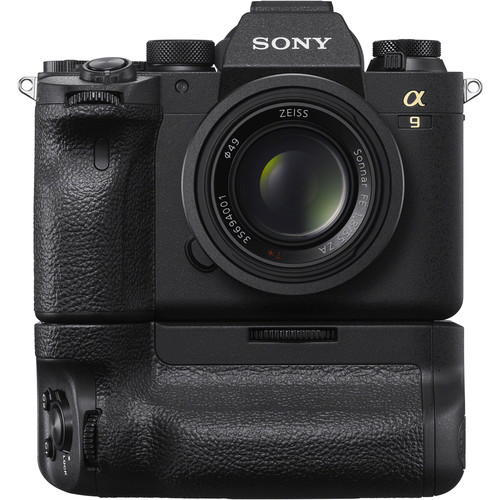
The Sony a9 II doesn’t reinvent mirrorless like its predecessor did, but it polishes almost every aspect of the original’s design. It doubles the mechanical‑shutter frame rate, refines the grip and controls, adds voice memos and gigabit networking, and retains the stacked sensor that delivers 20 fps silent shooting. For fast‑action stills, the Sony a9 II remains one of the most reliable tools on the market: autofocus is sticky and intelligent, the EVF is responsive and blackout‑free, and image quality is excellent across a wide ISO range.
In 2025, the Sony a9 II sits in a sweet spot. Used prices make it more accessible than the $6,000‑plus a9 III and a1, yet it still offers flagship performance for sports, wildlife and event photography. If your work doesn’t require the global‑shutter wizardry of the a9 III or the 50‑MP files of the a1, the Sony a9 II remains a fantastic investment – a camera that listens to photographers’ needs and responds with thoughtful upgrades without losing the essence that made the original a9 revolutionary.
Frequently Asked Questions
What’s the main difference between the Sony a9 II and the original a9?
How many frames per second can the Sony a9 II shoot?
Is the Sony a9 II good for video?
What memory cards work best with the Sony a9 II?
How long does the Sony a9 II battery last?
Should I buy the Sony a9 II or wait for something newer?
What’s the voice memo feature on the Sony a9 II?
Is the Sony a9 II weather sealed?
Heads up: Clicking on our affiliate links and exploring our sponsored content helps us at no extra cost to you, and we only recommend gear we’re absolutely crazy about!”

